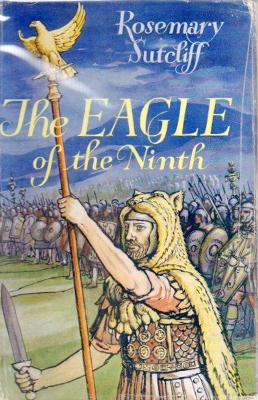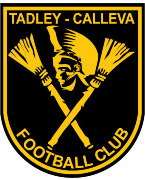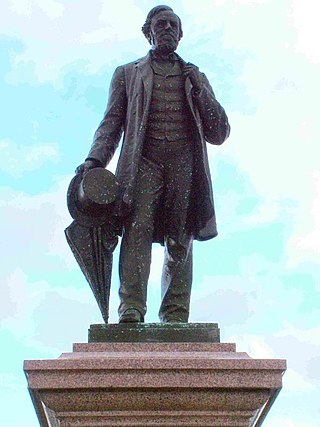
The Bayeux Tapestry is an embroidered cloth nearly 70 metres long and 50 centimetres tall that depicts the events leading up to the Norman Conquest of England in 1066, led by William, Duke of Normandy challenging Harold II, King of England, and culminating in the Battle of Hastings. It is thought to date to the 11th century, within a few years of the battle. Now widely accepted to have been made in England perhaps as a gift for William, it tells the story from the point of view of the conquering Normans and for centuries has been preserved in Normandy.

Calleva Atrebatum was an Iron Age oppidum, the capital of the Atrebates tribe. It then became a walled town in the Roman province of Britannia, at a major crossroads of the roads of southern Britain.

Little London is a village situated between the North Hampshire Downs and the gravel plains of the Kennet valley, 7 miles (11 km) north of Basingstoke and 15 miles (24 km) south of Reading. It is situated within Pamber civil parish and backs on to Pamber Forest, a 500-acre (2.0 km2) SSSI and remnant of the much larger ancient Royal Forest of Pamber. It is recorded as having been established for at least 400 years.

Silchester is a village and civil parish about 5 miles (8 km) north of Basingstoke in Hampshire. It is adjacent to the county boundary with Berkshire and about 9 miles (14 km) south-west of Reading.

The Eagle of the Ninth is a historical adventure novel for children written by Rosemary Sutcliff and published in 1954. The story is set in Roman Britain in the 2nd century AD, after the building of Hadrian's Wall.

The Museum of English Rural Life, also known as The MERL, is a museum, library and archive dedicated to recording the changing face of farming and the countryside in England. The museum is run by the University of Reading, and is situated in Redlands Road to the rear of the institution's London Road Campus near to the centre of Reading in southern England. The location was formerly known as East Thorpe House and then St Andrew's Hall. It is an accredited museum and accredited archive as recognised by Arts Council England and the National Archives.

Huntley & Palmers is a British company of biscuit makers originally based in Reading, Berkshire. Formed by Joseph Huntley in 1822, the company became one of the world's first global brands and ran what was once the world’s largest biscuit factory. The biscuits were sold in elaborately decorated biscuit tins. In 1900, the company's products were sold in 172 countries; further, their global reach saw their advertising posters feature scenes from around the world. Over the years, the company was also known as "J. Huntley & Son" and "Huntley & Palmer".

Joseph Huntley (1775–1857) was a 19th-century biscuit maker and innovator, who lived in the English town of Reading. In 1822 he founded a small biscuit baker and confectioner shop at number 72 London Street.

Stratfield Saye is a small village and civil parish in the Borough of Basingstoke and Deane and the English county of Hampshire. The parish includes the hamlets of West End Green, Fair Oak Green and Fair Cross.

Tadley Calleva Football Club are a football club based in Tadley, Hampshire, England. The club is affiliated to the Hampshire Football Association. The club's name of Calleva comes from the nearby Roman Town of Calleva Atrebatum, based just outside Silchester. They play in the Combined Counties League Premier Division South.

Port Way is an ancient road in southern England, which ran from Calleva Atrebatum in a south-westerly direction to Sorbiodunum. Often associated with the Roman Empire, the road may have predated the Roman occupation of Britain.

Mortimer West End is a village and civil parish in north Hampshire in England. It lies in the northernmost point of the county.

The Frith is a small univallate Iron Age hillfort to the north of Silchester, Calleva Atrebatum, Roman town in the English county of Hampshire. A single bank covers all sides apart from the south east, and is at the most about 5 feet (1.5 m) high on the western edge. A ditch is also traceable for the length of the bank, although at varying states.
Occupation at the site of Reading may date back to the Roman period, possibly as either a trading port on the River Thames, or as an intersection on the Roman road connecting London with Calleva Atrebatum near Silchester.

The Silchester Ogham stone is a pillar stone discovered at the Roman town on Calleva Atrebatum in Silchester, Hampshire during excavations in 1893. Thus far it remains the only one of its kind found in England, and the only ogham inscription in England east of Cornwall and Devon. The stone is held in a storage facility of Reading Museum in Reading, Berkshire.

The Devil's Highway was a Roman road in Britain connecting Londinium (London) to Calleva Atrebatum (Silchester) via Pontes (Staines). The road was the principal route to the west of Britain during the Roman period but, whilst maintained for its easternmost section, was replaced by other routes after the demise of Roman Britain.

The Silchester eagle is a Roman bronze casting dating from the first or second century CE, uncovered in 1866 at Calleva Atrebatum in Silchester, Hampshire, England. It was purchased in 1980 by Reading Museum in Berkshire where it remains on display as of 2022.

The statue of George Palmer stands in Palmer Park, in Reading, Berkshire. The statue, by George Blackall Simonds, was unveiled on 4 November 1891, though it was originally in Broad Street and only later moved to Palmer Park. The statue has been classed Grade II Listed monument since 14 December 1978.

The following is a timeline of the history of Reading, the county town of Berkshire in England.
Nina Crummy is a British archaeologist and artefact specialist, especially of Roman material culture.























